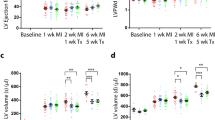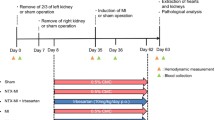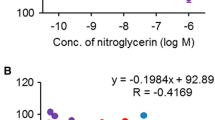Abstract
The aim of the present study was to investigate whether the non-peptide angiotensin II type 1 (AT1) receptor antagonist irbesartan (SR 47436, BMS 186295, 2-n-butyl-3[2‘-(1H-tetrazol-5-yl)-biphenyl-4-yl)methyl]-1,3-diaza-spiro[4,4]non-1-en-4-one) has myocardial protective effects during regional myocardial ischemia/reperfusion in vivo. Eighteen anesthetized open-chest dogs were instrumented for measurement of left ventricular and aortic pressure (tip manometer and pressure transducer, respectively), and coronary flow (ultrasonic flowprobes). Regional myocardial function was assessed by Doppler displacement transducers as systolic wall thickening (sWT) in the antero-apical and the postero-basal wall. The animals underwent 1 h of left anterior descending coronary artery (LAD) occlusion and subsequent reperfusion for 3 hours. Irbesartan (10 mg kg−1, n=9) or the vehicle (KOH, control, n=9) was injected intravenously 30 min before LAD occlusion. Regional myocardial blood flow (RMBF) was measured after irbesartan injection and at 30 min LAD occlusion using colored microspheres. Infarct size was determined by triphenyltetrazolium chloride staining after 3 h of reperfusion. There was no recovery of sWT in the LAD perfused area in both groups at the end of the experiments (systolic bulging, −15.1±6.1% of baseline (irbesartan) vs. −12.3±3.0% (control), mean±SEM). Irbesartan led to an increase in RMBF in normal myocardium (2.47±0.40 vs. 1.35±0.28 ml min−1 g−1, P<0.05), and also to an increase in collateral blood flow to the ischemic area (0.27±0.04 vs. 0.17±0.02 ml min−1 g−1, P=<0.05). Infarct size (percent of area at risk) was 24.8±3.2% in the treatment group compared with 26.9±4.8% in the control group (P=0.72). These results indicate that a blockade of angiotensin II AT1 receptors with irbesartan before coronary artery occlusion led to an increase in RMBF, but did not result in a significant reduction of myocardial infarct size.
Similar content being viewed by others
Author information
Authors and Affiliations
Additional information
Received: 6 October 1999 Returned for revision: 16 November 1999 Revision received: 7 February 2000 Accepted: 29 March 2000
Rights and permissions
About this article
Cite this article
Preckel, B., Schlack, W., Gonzàlez, M. et al. Influence of the angiotensin II AT1 receptor antagonist irbesartan on ischemia/reperfusion injury in the dog heart. Basic Res Cardiol 95, 404–412 (2000). https://doi.org/10.1007/s003950070040
Issue Date:
DOI: https://doi.org/10.1007/s003950070040




